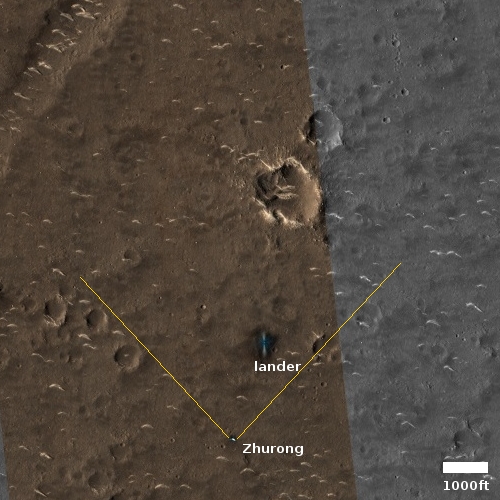China to fly asteroid sample mission in ’24
The new colonial movement: Chinese scientists have revealed that China is now building an asteroid sample mission to launch in ’24 and grab samples in ’25 from the near Earth asteroid dubbed Kamoʻoalewa.
According to a correspondence in Nature Astronomy, there are two typical approaches to sampling asteroids like Kamoʻoalewa, namely anchor-and-attach and touch-and-go.
The former requires delicate and dangerous interactions with the planetary body but allows more controllable sampling and more chances for surface analysis. The latter, used by Hayabusa 2 and OSIRIS-Rex, is a quick interaction facilitated by advanced navigation, guidance and control and fine control of thrusters.
China’s mission will use both architectures in order to “guarantee that at least one works.” The paper states that there is “still no successful precedent for the anchor-and-attach architecture,” meaning a possible deep space first. A 2019 presentation reveals that China’s spacecraft will attempt to land on the asteroid using four robotic arms, with a drill on the end of each for anchoring.
The attempt to do both these approaches is audacious, especially because the evidence from both OSIRIS-REx and Hayabusa-2 is that it will be difficult to safely land and hold onto a rubble pile asteroid. The material is too loosely held together.
The new colonial movement: Chinese scientists have revealed that China is now building an asteroid sample mission to launch in ’24 and grab samples in ’25 from the near Earth asteroid dubbed Kamoʻoalewa.
According to a correspondence in Nature Astronomy, there are two typical approaches to sampling asteroids like Kamoʻoalewa, namely anchor-and-attach and touch-and-go.
The former requires delicate and dangerous interactions with the planetary body but allows more controllable sampling and more chances for surface analysis. The latter, used by Hayabusa 2 and OSIRIS-Rex, is a quick interaction facilitated by advanced navigation, guidance and control and fine control of thrusters.
China’s mission will use both architectures in order to “guarantee that at least one works.” The paper states that there is “still no successful precedent for the anchor-and-attach architecture,” meaning a possible deep space first. A 2019 presentation reveals that China’s spacecraft will attempt to land on the asteroid using four robotic arms, with a drill on the end of each for anchoring.
The attempt to do both these approaches is audacious, especially because the evidence from both OSIRIS-REx and Hayabusa-2 is that it will be difficult to safely land and hold onto a rubble pile asteroid. The material is too loosely held together.










